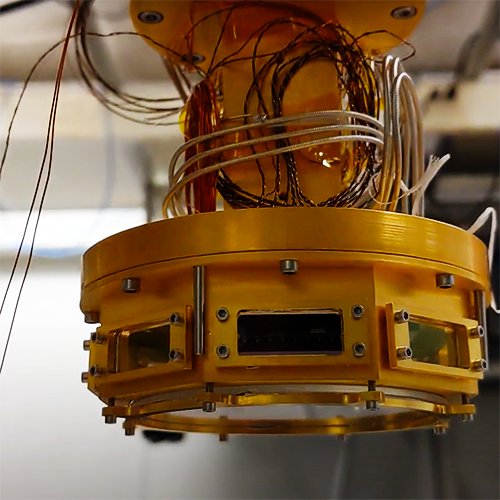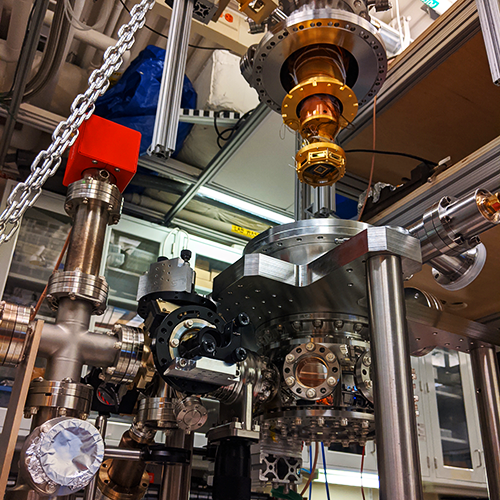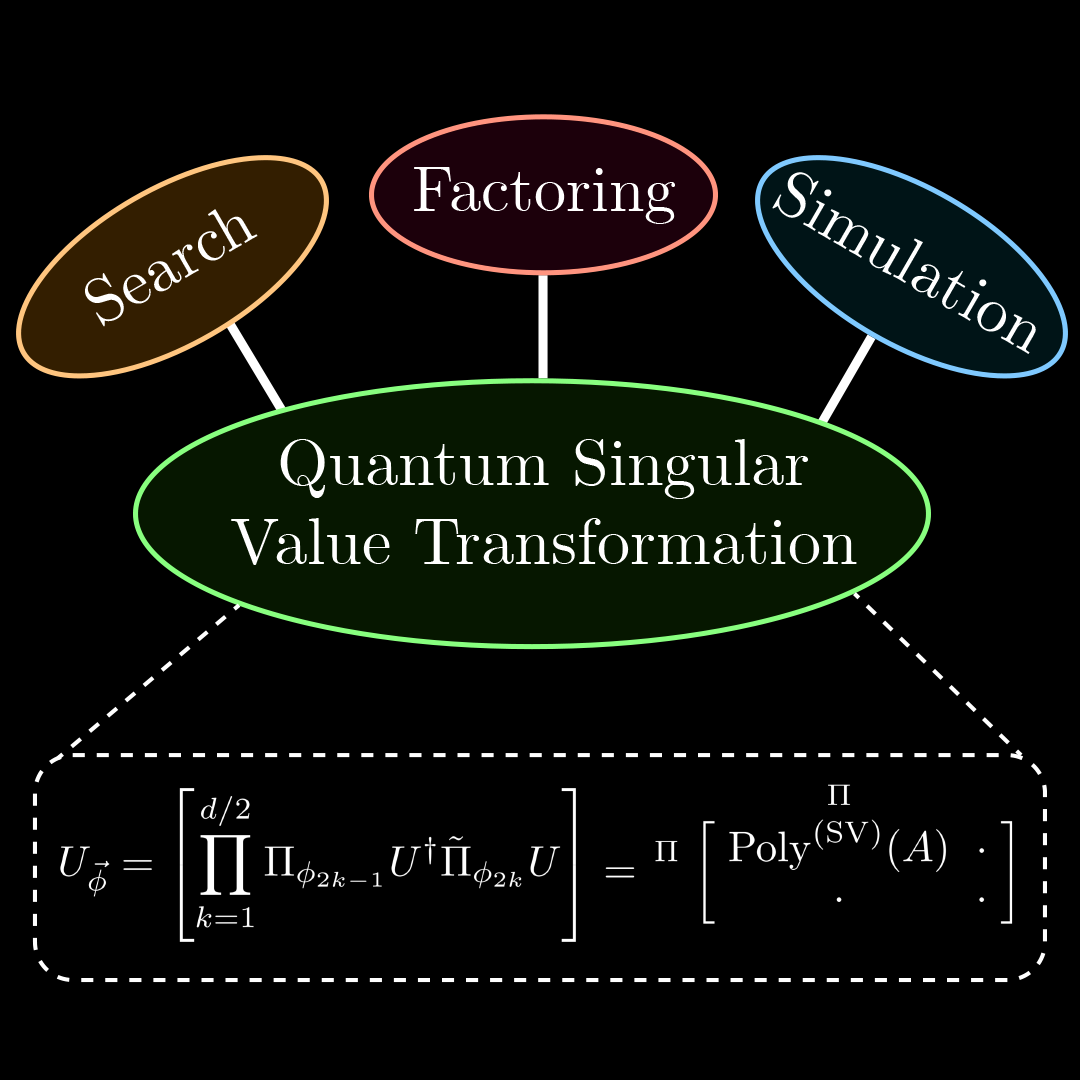RESEARCH
An overview of the experimental and theoretical interests of our group.
An overview of the experimental and theoretical interests of our group.
High-fidelity quantum information experiments have been performed on many different types of qubits, but most results fall into one of two categories: optical qubits, where the quantum information is encoded between the ground state and a long-lived metastable excited state, or ground state qubits, where the quantum information is encoded between two different Zeeman- or hyperfine- sublevels of the ground state. We’re looking into a third type of qubit — the metastable qubit, where the quantum information is encoded into two sublevels of the metastable excited state (whose lifetime is so long on the timescale of quantum operations that it can be considered effectively infinite). With this, we will be able to have three different types of qubits within a single ion species — OMG! (optical, metastable, and ground...). Check out the blueprint paper for details.
Trapped ions make for great qubits, but it isn't always obvious how we can pack ever larger numbers of ions onto the same chip. One major obstacle that prevents us from controlling many ions across a chip is the size of the lenses and various optics required to deliver focused laser light to the ions. The field of integrated photonics offers many clever solutions for performing most of this routing on the ion trap itself, with integrated waveguides for sending optical signals around the trap analogous to electrical signals in an integrated circuit. Our recent work has focused on a new material platform developed at MIT Lincoln Laboratory for providing low-loss photonic structures that span the relevant wavelengths of our ion species of interest. Using this platform, we have recently demonstrated all necessary operations for trapping, cooling, controlling and detecting ions — all with light sent in on a fiber optic connection to the side of the chip! Currently we are exploring the use of integrated optics based on this platform for rapid multi-mode laser cooling schemes and collection of light for remote entanglement generation.
Generally, trapped-ion researchers have encoded quantum information in qubits, where two electronic or spin levels of the ion are used as a computer’s 1’s and 0’s. The two-level nature of this model is useful in its simplicity — however, with a trapped ion, we can access many more energy levels, not just two. The energy levels of the trapped ion's harmonic oscillator potential actually give us access to a near-infinite number of orthogonal states (energy levels) to work with! We are exploring the use of these energy levels as a computing resource, and, along the way, working to improve our control of ion motion and create interesting non-classical motional states.

Our trapped ion machine's cryostat.

A wider view of our machine, with our recently fabricated MOT.
The field of quantum computing is in need of a richer family of algorithms that offer significant improvement over their classical counterparts. Specifically, we're interested in expanding on the work of former Quanta Group graduate student Guang Hao Low in formalizing the uses of the Quantum Singular Value Transform (QSVT)—a broad framework for optimally computing non-linear transformations on the singular values of arbitrary linear operators embedded in physical Hilbert spaces. This one algorithmic primitive has enjoyed success in contexts from condensed matter ground state preparations to enaction of the Moore-Penrose pseudo-inverse.
Near term quantum computers are noisy, and for superconducting qubits in particular calibrating cavity drive frequencies to perform accurate quantum gates is both computationally expensive and necessary for high-fidelity computation. Our group has worked to improve the sample and time complexity of these calibration algorithms by assuming reasonable parameterized forms for the (unknown) system Hamiltonian, and applying classical machine learning methods to estimate these underlying parameters. These methods have been benchmarked with respect to real calibration protocols used by our collaborators, with. significant practical speedups.
The Quanta Group's non-quantum-computing research in machine learning focuses on two goals: (1) dataset uncertainty estimation, (2) the synergy of artificial intelligence to augment human intelligence. To this end, Quanta Group EECS PhD student Curtis Northcutt established confident learning, a family of theory and algorithms for characterizing, finding, and learning with label errors in datasets, and cleanlab, the official Python framework for machine learning and deep learning with noisy labels in datasets.

Our group is particularly interested in exploring applications of the quantum singular value transform (QSVT) and its role in the unification of previously disparate quantum algorithms.

Our group applies machine learning theory in multiple contexts: from quantum parameter estimation to enhanced digitial learning.
2023 © MIT RLE Quanta Group; MIT Bldg. 26.